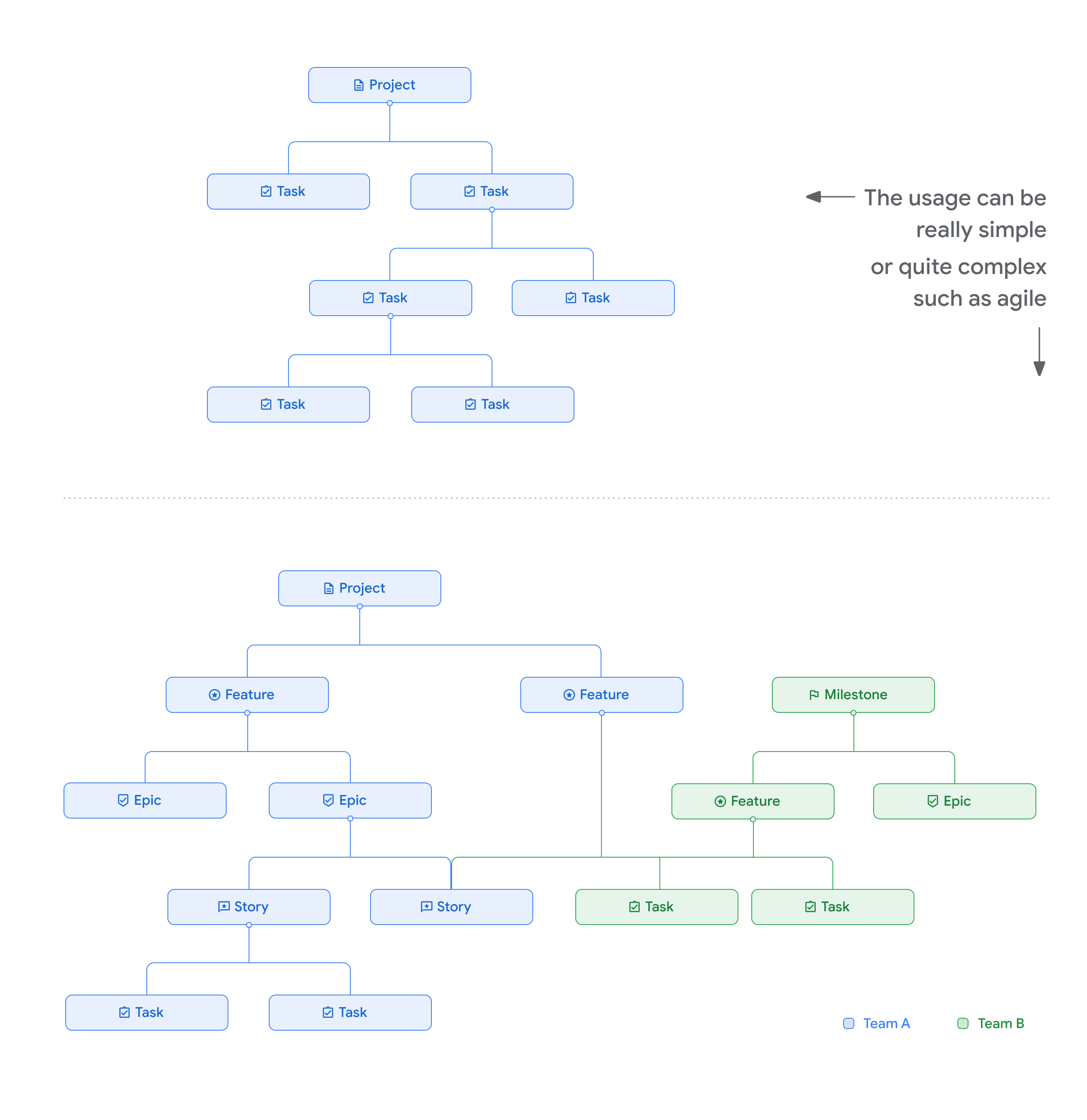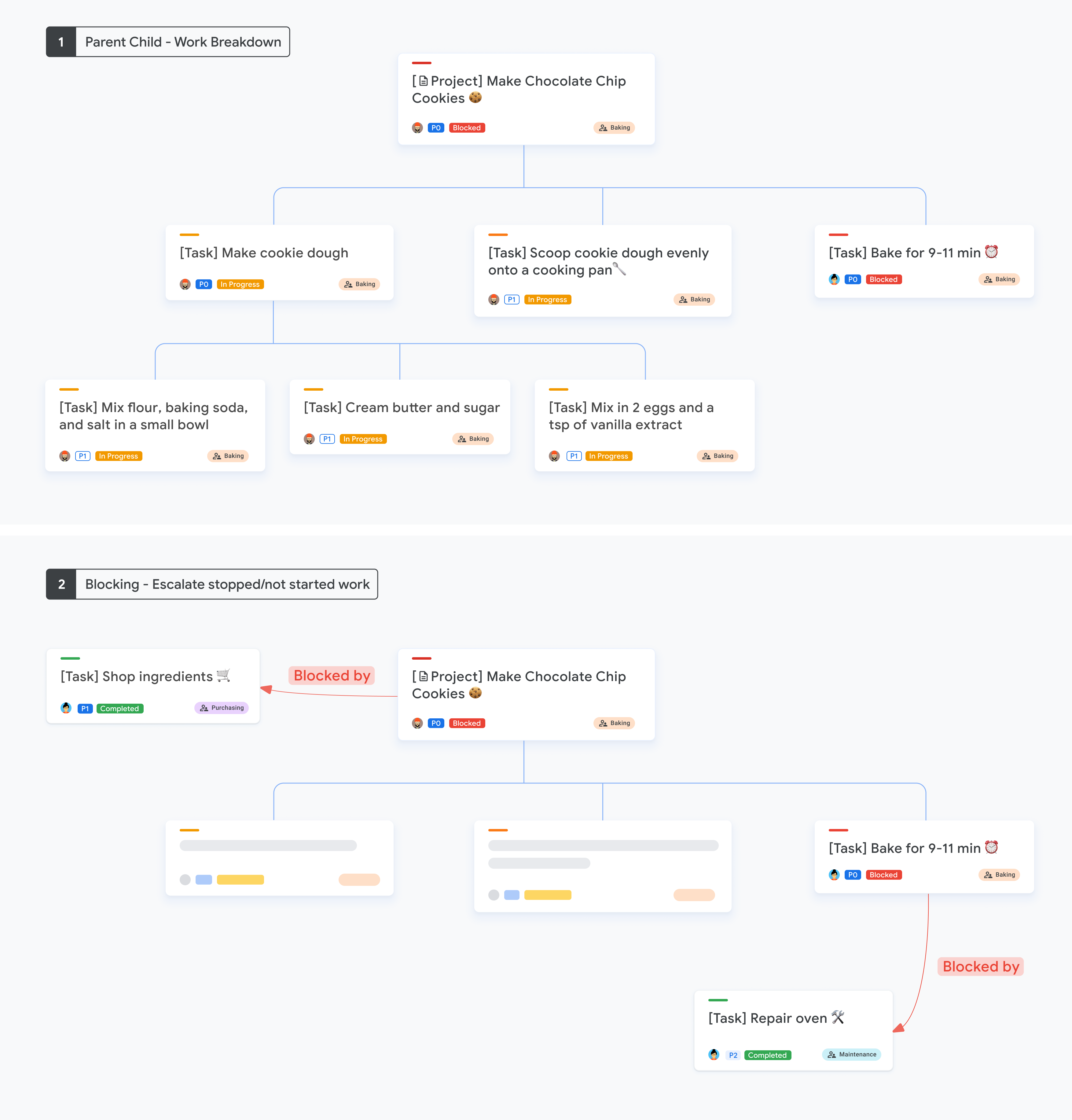Parent-Child Relationships
Stay organized with collections
Save and categorize content based on your preferences.
Google Issue Tracker supports parent-child relationships. A parent-child
relationship is typically used to represent the breakdown of work within a given
effort. A parent can have multiple children, and a child can have multiple
parents.
The parent-child relationship has the following characteristics:
| Characteristic |
Details |
| Relationship |
N:N |
| Ordering |
Ordering of children within a parent is supported. |
| Cycle detection |
Cyclic dependencies are prevented by the system. |
| Max direct children |
500 |
| Max ancestors |
1000 |
Examples
The following graphic shows some sample parent-child relationships.

Parent-child relationships and blocking
The existing Blocking and Blocked by relationships are still supported
when you use parent-child relationships. When you're combining parent-child
relationships with blocking:
- Use parent-child relationships to break down work into smaller units.
- Use blocking and blocked by when timing and sequence are critical,
and you want to provide clear indications in the UI to escalate stopped or
not started work.
The following graphic shows examples of parent-child and blocking work
breakdowns.

All rights reserved. Java is a registered trademark of Oracle and/or its affiliates.
Last updated 2025-02-04 UTC.
[[["Easy to understand","easyToUnderstand","thumb-up"],["Solved my problem","solvedMyProblem","thumb-up"],["Other","otherUp","thumb-up"]],[["Missing the information I need","missingTheInformationINeed","thumb-down"],["Too complicated / too many steps","tooComplicatedTooManySteps","thumb-down"],["Out of date","outOfDate","thumb-down"],["Samples / code issue","samplesCodeIssue","thumb-down"],["Other","otherDown","thumb-down"]],["Last updated 2025-02-04 UTC."],[[["Google Issue Tracker enables the creation of parent-child relationships to represent the hierarchical breakdown of work within a project."],["Issues can have multiple parents and children, but the system prevents circular dependencies and limits the number of direct children to 500 and total ancestors to 1000."],["While parent-child relationships are ideal for structuring tasks, \"Blocking\" and \"Blocked by\" relationships should be used to indicate critical timing and sequencing dependencies."],["Users are encouraged to leverage both relationship types to manage work effectively, using parent-child for work breakdown and blocking for highlighting time-sensitive dependencies."]]],[]]
![]()
![]()